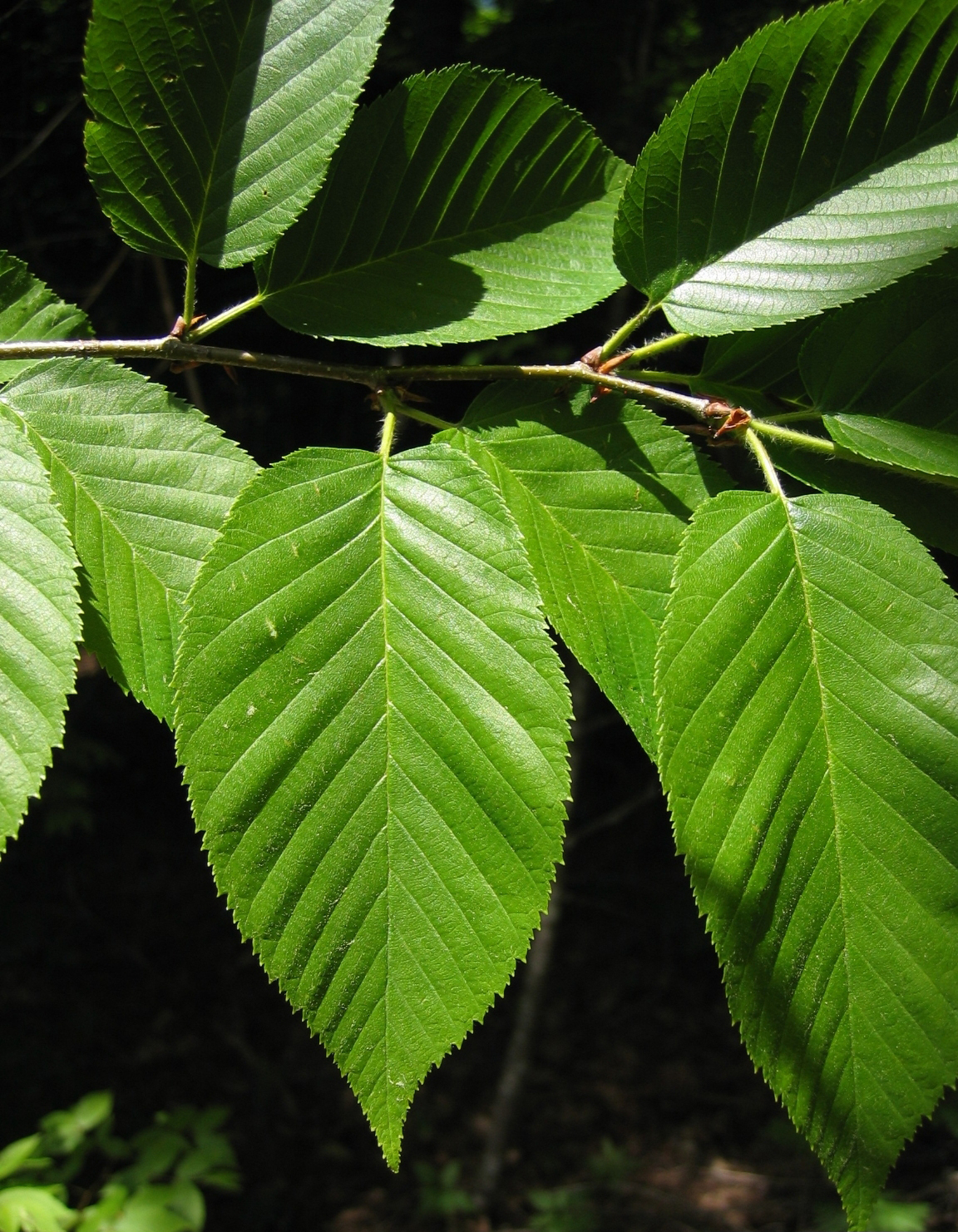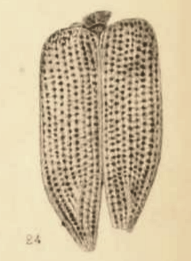|
Betula Leopoldae
''Betula leopoldae'' is an extinct species of birch in the family Betulaceae. The species is known from fossil leaves, catkins, and inflorescences found in the early Eocene deposits of northern Washington state, United States, and similar aged formations in British Columbia, Canada. The species is placed as basal in ''Betula'', either as a stem group species, or an early divergent species. History ''Betula leopoldae'' fossils have been identified from a number of locations in Western North America, the 49 million year old Klondike Mountain Formation near Republic, Washington along with the Allenby Formation near Princeton, the Falkland fossil site near Falkland, and McAbee Fossil Beds both of the Kamloops Groups Tranquille Formation, and the Quilchena fossil site near Quilchena, British Columbia. In general, the geologic ages for the Okanagan Highland locations are of Early Eocene, with the sites that have current uranium-lead or argon–argon radiometric dates indicating ... [...More Info...] [...Related Items...] OR: [Wikipedia] [Google] [Baidu] |
Ypresian
In the geologic timescale the Ypresian is the oldest age (geology), age or lowest stage (stratigraphy), stratigraphic stage of the Eocene. It spans the time between , is preceded by the Thanetian Age (part of the Paleocene) and is followed by the Eocene Lutetian Age. The Ypresian is consistent with the lower Eocene. Events The Ypresian Age begins during the throes of the Paleocene–Eocene Thermal Maximum (PETM). The Fur Formation in Denmark, the Messel shales in Germany, the Oise amber of France and Cambay amber of India are of this age. The Eocene Okanagan Highlands are an uplands subtropical to temperate series of lakes from the Ypresian. Stratigraphic definition The Ypresian Stage was introduced in scientific literature by Belgium, Belgian geologist André Hubert Dumont in 1850. The Ypresian is named after the Flanders, Flemish city of Ypres in Belgium (spelled ''Ieper'' in Dutch). The definitions of the original stage were totally different from the modern ones. The Ypresi ... [...More Info...] [...Related Items...] OR: [Wikipedia] [Google] [Baidu] |
Falkland, British Columbia
Falkland is an unincorporated community located in the Columbia-Shuswap Regional District of British Columbia, Canada between Vernon and Kamloops. Falkland is recognized for one of Canada's largest Canadian flags, which is located on Gyp Mountain and can be seen up to away. The Falkland area has a wide array of lakes for fishing and recreation. Also on the Victoria Day holiday, the Falkland Stampede begins. The Falkland Stampede is one of Canada's oldest stampedes. Town history The members of the Salish tribes frequently stayed in the Slahaltkan during the summer to gather the tribe's food for the winter. It was the job of the women to prepare the fish and meat for drying beside the fire. Where to put the meat caused slight disagreement among the women because the ever-changing breeze would cause the wind to blow in changing directions. Thus the valley was named "Slahaltkan", meaning "Meeting of the winds". The name Slahaltkan was never used among the people who eventuall ... [...More Info...] [...Related Items...] OR: [Wikipedia] [Google] [Baidu] |
Paleobotany
Paleobotany, which is also spelled as palaeobotany, is the branch of botany dealing with the recovery and identification of plant remains from geological contexts, and their use for the biological reconstruction of past environments (paleogeography), and the evolutionary history of plants, with a bearing upon the evolution of life in general. A synonym is paleophytology. It is a component of paleontology and paleobiology. The prefix ''palaeo-'' means "ancient, old", and is derived from the Greek adjective , . Paleobotany includes the study of terrestrial plant fossils, as well as the study of prehistoric marine photoautotrophs, such as photosynthetic algae, seaweeds or kelp. A closely related field is palynology, which is the study of fossilized and extant spores and pollen. Paleobotany is important in the reconstruction of ancient ecological systems and climate, known as paleoecology and paleoclimatology respectively; and is fundamental to the study of green plant developm ... [...More Info...] [...Related Items...] OR: [Wikipedia] [Google] [Baidu] |
Holotype
A holotype is a single physical example (or illustration) of an organism, known to have been used when the species (or lower-ranked taxon) was formally described. It is either the single such physical example (or illustration) or one of several examples, but explicitly designated as the holotype. Under the International Code of Zoological Nomenclature (ICZN), a holotype is one of several kinds of name-bearing types. In the International Code of Nomenclature for algae, fungi, and plants (ICN) and ICZN, the definitions of types are similar in intent but not identical in terminology or underlying concept. For example, the holotype for the butterfly '' Plebejus idas longinus'' is a preserved specimen of that subspecies, held by the Museum of Comparative Zoology at Harvard University. In botany, an isotype is a duplicate of the holotype, where holotype and isotypes are often pieces from the same individual plant or samples from the same gathering. A holotype is not necessarily "typ ... [...More Info...] [...Related Items...] OR: [Wikipedia] [Google] [Baidu] |
Paratype
In zoology and botany, a paratype is a specimen of an organism that helps define what the scientific name of a species and other taxon actually represents, but it is not the holotype (and in botany is also neither an isotype nor a syntype). Often there is more than one paratype. Paratypes are usually held in museum research collections. The exact meaning of the term ''paratype'' when it is used in zoology is not the same as the meaning when it is used in botany. In both cases however, this term is used in conjunction with ''holotype''. Zoology In zoological nomenclature, a paratype is officially defined as "Each specimen of a type series other than the holotype.", ''International Code of Zoological Nomenclature'' In turn, this definition relies on the definition of a "type series". A type series is the material (specimens of organisms) that was cited in the original publication of the new species or subspecies, and was not excluded from being type material by the author (th ... [...More Info...] [...Related Items...] OR: [Wikipedia] [Google] [Baidu] |
Type Specimen
In biology, a type is a particular wiktionary:en:specimen, specimen (or in some cases a group of specimens) of an organism to which the scientific name of that organism is formally attached. In other words, a type is an example that serves to anchor or centralizes the defining features of that particular taxon. In older usage (pre-1900 in botany), a type was a taxon rather than a specimen. A taxon is a scientifically named grouping of organisms with other like organisms, a set (mathematics), set that includes some organisms and excludes others, based on a detailed published description (for example a species description) and on the provision of type material, which is usually available to scientists for examination in a major museum research collection, or similar institution. Type specimen According to a precise set of rules laid down in the International Code of Zoological Nomenclature (ICZN) and the International Code of Nomenclature for algae, fungi, and plants (ICN), the ... [...More Info...] [...Related Items...] OR: [Wikipedia] [Google] [Baidu] |
Lutetian
The Lutetian is, in the geologic timescale, a stage or age in the Eocene. It spans the time between . The Lutetian is preceded by the Ypresian and is followed by the Bartonian. Together with the Bartonian it is sometimes referred to as the Middle Eocene Subepoch. Stratigraphic definition The Lutetian was named after Lutetia, the Latin name for the city of Paris. The Lutetian Stage was introduced in scientific literature by French geologist Albert de Lapparent in 1883 and revised by A. Blondeau in 1981. The base of the Lutetian Stage is at the first appearance of the nanofossil ''Blackites inflatus'', according to an official reference profile (GSSP) established in 2011. Of two candidates located in Spain, the Gorrondatxe section was chosen.See thwebsite of Eustoquio Molinafor these candidates. The top of the Lutetian (the base of the Bartonian) is at the first appearance of calcareous nanoplankton species ''Reticulofenestra reticulata''. The Lutetian overlaps with the Geisel ... [...More Info...] [...Related Items...] OR: [Wikipedia] [Google] [Baidu] |
Argon–argon Dating
Argon–argon (or 40Ar/39Ar) dating is a radiometric dating method invented to supersede potassiumargon (K/Ar) dating in accuracy. The older method required splitting samples into two for separate potassium and argon measurements, while the newer method requires only one rock fragment or mineral grain and uses a single measurement of argon isotopes. 40Ar/39Ar dating relies on neutron irradiation from a nuclear reactor to convert a stable form of potassium (39K) into the radioactive 39Ar. As long as a standard of known age is co-irradiated with unknown samples, it is possible to use a single measurement of argon isotopes to calculate the 40K/40Ar* ratio, and thus to calculate the age of the unknown sample. 40Ar* refers to the radiogenic 40Ar, i.e. the 40Ar produced from radioactive decay of 40K. 40Ar* does not include atmospheric argon adsorbed to the surface or inherited through diffusion and its calculated value is derived from measuring the 36Ar (which is assumed to be of atmosphe ... [...More Info...] [...Related Items...] OR: [Wikipedia] [Google] [Baidu] |
Early Eocene
In the geologic timescale the Ypresian is the oldest age or lowest stratigraphic stage of the Eocene. It spans the time between , is preceded by the Thanetian Age (part of the Paleocene) and is followed by the Eocene Lutetian Age. The Ypresian is consistent with the lower Eocene. Events The Ypresian Age begins during the throes of the Paleocene–Eocene Thermal Maximum (PETM). The Fur Formation in Denmark, the Messel shales in Germany, the Oise amber of France and Cambay amber of India are of this age. The Eocene Okanagan Highlands are an uplands subtropical to temperate series of lakes from the Ypresian. Stratigraphic definition The Ypresian Stage was introduced in scientific literature by Belgian geologist André Hubert Dumont in 1850. The Ypresian is named after the Flemish city of Ypres in Belgium (spelled ''Ieper'' in Dutch). The definitions of the original stage were totally different from the modern ones. The Ypresian shares its name with the Belgian Ieper Group (French: ... [...More Info...] [...Related Items...] OR: [Wikipedia] [Google] [Baidu] |
Quilchena, British Columbia
Quilchena ( thp, q̓əłmíx) is an unincorporated community located on the south shore of Nicola Lake near the city of Merritt, British Columbia, Canada in that province's Nicola Country region. On the former main route between Merritt and Kamloops, it is now largely bypassed since the construction of the Coquihalla Highway Coquihalla may refer to: *British Columbia Highway 5, also known as Coquihalla highway * Coquihalla River * Coquihalla Pass * Okanagan—Coquihalla, a federal electoral district in British Columbia * Coquihalla Canyon Provincial Park *Coquihalla Ri .... A heritage hotel is the main landmark, lately transformed into a small golf resort. ReferencesBCGNIS listing "Quilchena (locality)" [...More Info...] [...Related Items...] OR: [Wikipedia] [Google] [Baidu] |
Quilchena Fossil Site
The Coldwater Beds are a geologic formation of the Okanagan Highlands in British Columbia, Canada. They preserve fossils dating back to the Ypresian stage of the Eocene period, or Wasatchian in the NALMA classification.Coldwater Beds at .org The formation comprises s, s and |




.jpg)
